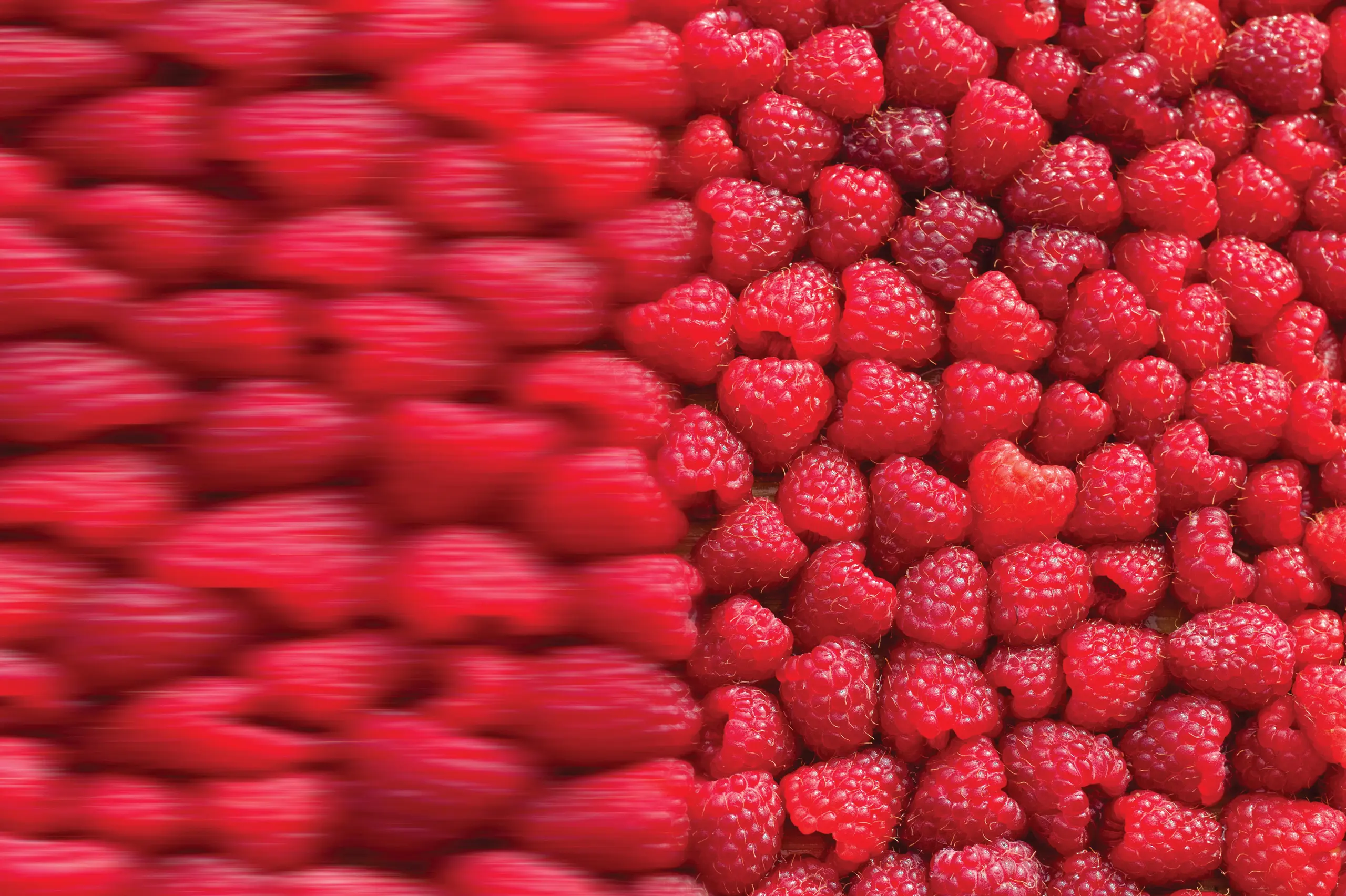All RYPEN products are food-contact approved to EU and US FDA standards, with a letter of compliance issued by Campden BRI.
Due to the nature of the fruit and packaging, quality defects and poor condition become highly visible, meaning rejections are common. Across multiple commercial trials RYPEN has reduced berry collapse, bleed and dehydration.
- 25% reduction in respiration rate
- Shelf-life increased by up to 3 days
Raspberries are a quintessentially mid-summer fruit that grows best in high light levels with cooler nights. They are renowned as the most challenging berry to grow commercially due to their delicate nature.
Modern varieties in supermarkets are the result of years of cross-breeding trials; with ‘Maravilla,’ ‘Adelita’, ‘Rosita’ and ‘Tulameen’ all offering improved sweetness, larger berries, extended harvest periods and all-important shipping robustness.
The key to unlock consumer taste buds is having a juicy, aromatic flavour with balanced sweetness and acidity. The global export season for red raspberries generally spans June to October in Europe and North America, and November to April in the southern hemisphere. Key export regions include Mexico, Morocco, Poland, Portugal and Spain; but all domestic markets have their own seasons.

© Copyright 2026
It’s Fresh Limited – All Rights Reserved. RYPEN is a registered trademark of It’s Fresh Limited.






















